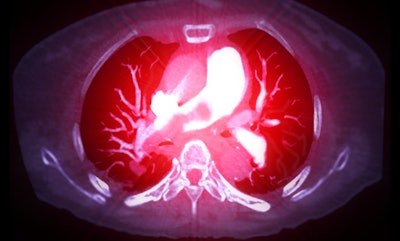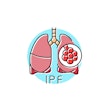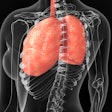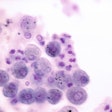
Medical technology company AngioDynamics, Inc., recently announced that the U. S. Food and Drug Administration (FDA) has given 510(k) clearance to the AlphaVac F1885 System for the treatment of pulmonary embolism (PE), enhancing its utility in critical medical scenarios such as PE.
The expanded FDA indication allows for the utilization of the AlphaVac F1885 System for the treatment of PE, which broadens the applicability of it in the non-surgical removal of thrombi or emboli from the venous vasculature. The indication expands treatment options for patients with PE, reducing thrombus burden and improving right ventricular function.
“FDA clearance marks a significant advancement in patient care and safety,” said Juan Carlos Serna, AngioDynamics SVP of Scientific and Clinical Affairs. “In addition to meeting our primary endpoints, the trial also showed a meaningful, favorable reduction in clot burden, ultimately improving patient outcomes.”
In December 2023, AngioDynamics announced the completion of patient enrollment in its Acute Pulmonary Embolism Extraction Trial with the AlphaVac System (APEX-AV) study, a single-arm Investigational Device Exemption study that enrolled 122 patients with confirmed acute, intermediate-risk PE across 25 hospital-based sites in the United States to assess the AlphaVac F18⁸⁵ System for the treatment of PE.
The APEX-AV study was initiated in partnership with the Pulmonary Embolism Response Team (PERT) Consortium and led by co-principal investigators William Brent Keeling, MD, associate professor of surgery, department of surgery, at the Emory University School of Medicine, and immediate past president, the PERT Consortium, and Mona Ranade, MD, assistant professor of interventional radiology at the David Geffen School of Medicine at UCLA.
“The addition of the AlphaVac System in the mechanical thrombectomy world is a critical step forward in the treatment of PE patients,” said Dr. Keeling. “The rapid patient enrollment and the excellent safety and efficacy outcomes from the APEX-AV study validate the need for such technologies to be part of the PE treatment algorithm.”
The primary efficacy endpoint of the APEX-AV study was the reduction in RV/LV ratio between baseline and 48 hours post-procedure. The primary safety endpoint was the rate of major adverse events (MAEs), including events such as major bleeding and serious device-related clinical deterioration, pulmonary vascular injury and cardiac injury, within the first 48 hours. Patients were followed for 30 days post-index procedure.
“The 510(k) clearance of the AlphaVac System represents an important milestone towards the treatment of PE,” said Mona Ranade, MD, Assistant Professor, Interventional Radiology, at the David Geffen School of Medicine at UCLA. “The data from the APEX-AV study showed a significant improvement in the RV function and a rapid resolution of clot burden in the pulmonary arteries.”
The APEX-AV Study showed a mean decrease in the RV/LV ratio from baseline to 48 hours post-procedure of 0.45 (significantly greater than the pre-defined performance goal of 0.12 (p < 0.001)) and a MAEs rate of 4.1% (significantly lower than the pre-defined performance goal of 25% (p < 0.001)). The study also showed a 35.5% mean reduction in clot burden from baseline to 48 hours post-procedure.
“Catheter-based therapies are becoming a major tool in the PE space,” said John M. Moriarty, MD, president-elect, the PERT Consortium, and professor, interventional radiology, at UCLA. “With a handle that can limit blood loss and a true large bore cannula with a 33 Fr funnel, I expect the AlphaVac System to play a crucial role in the treatment of PE.”























